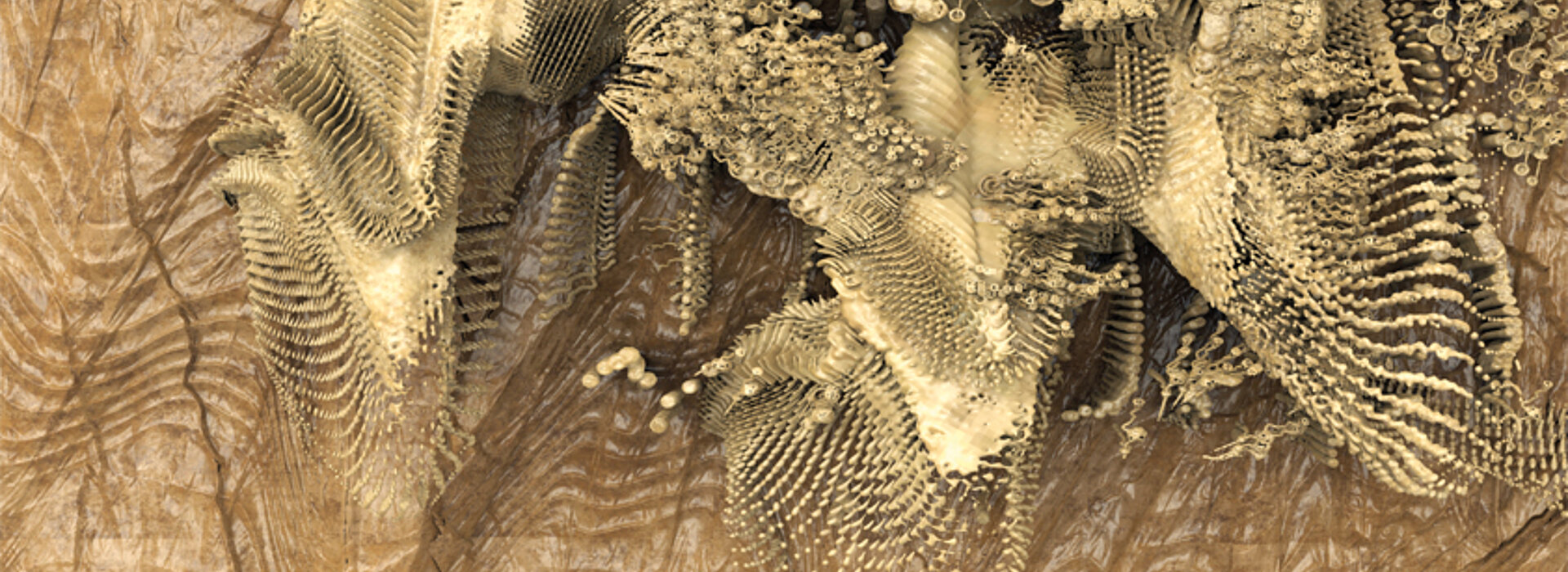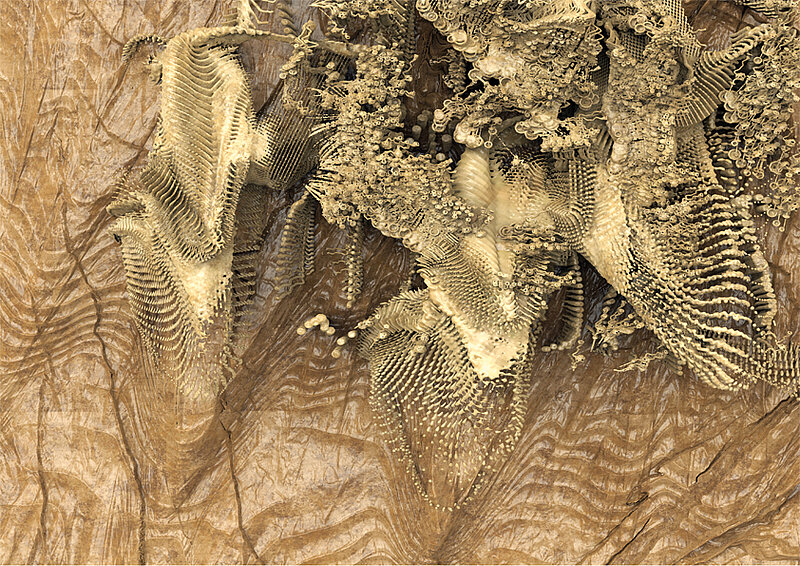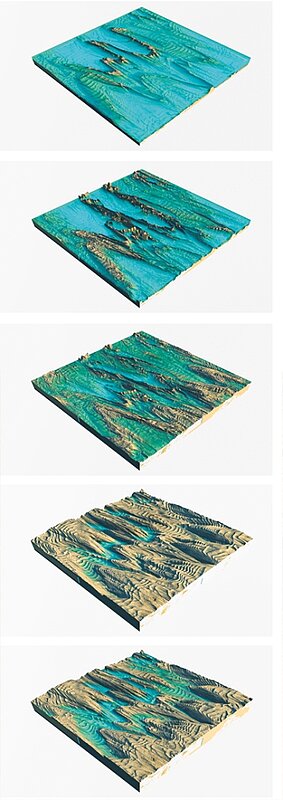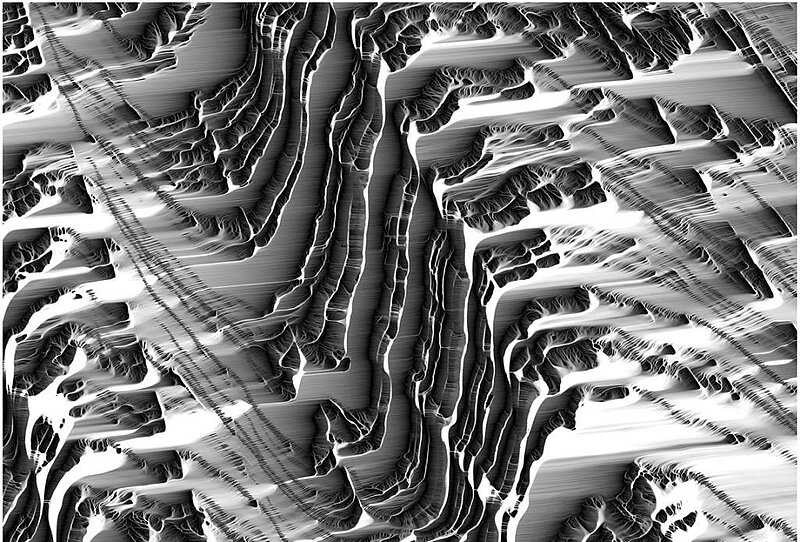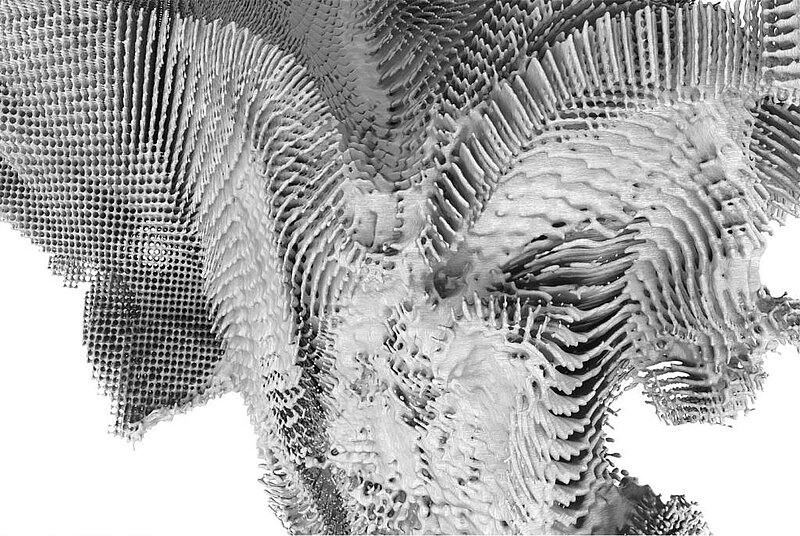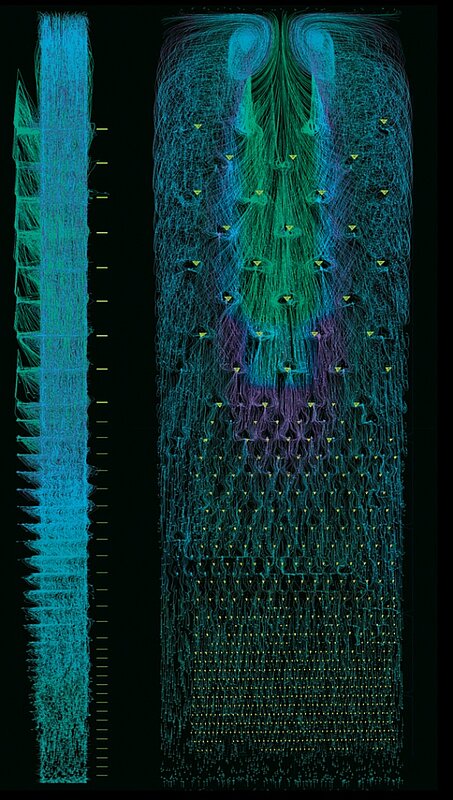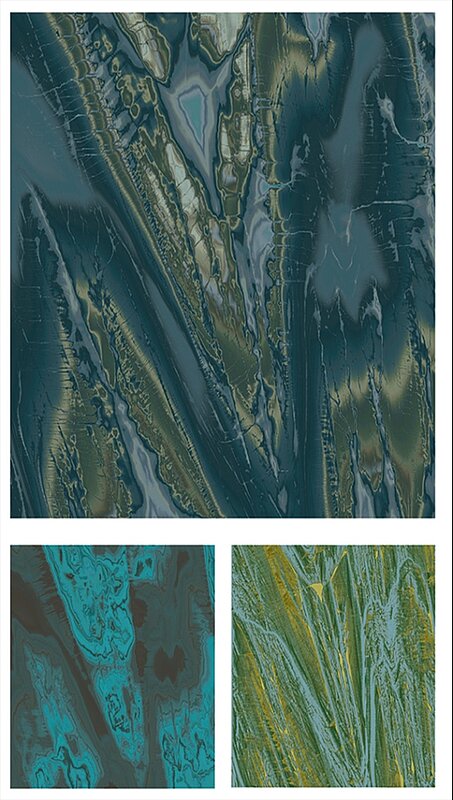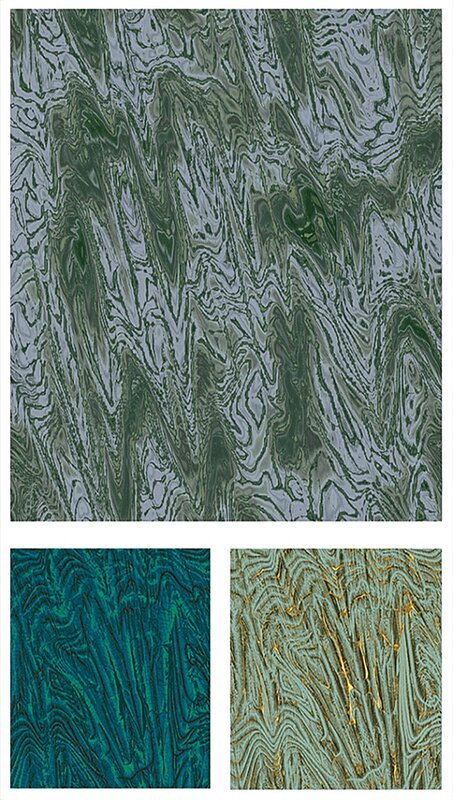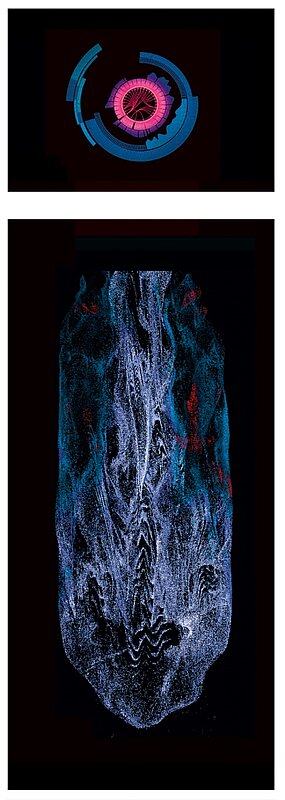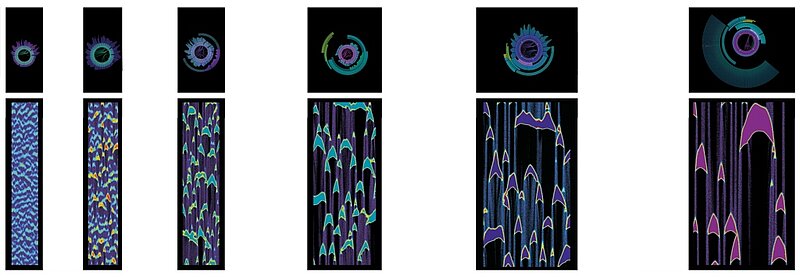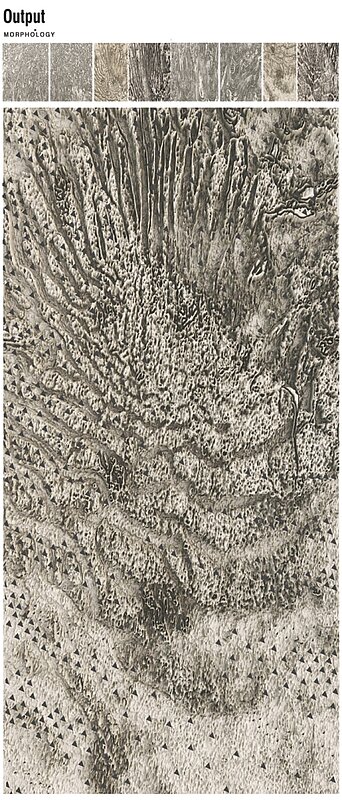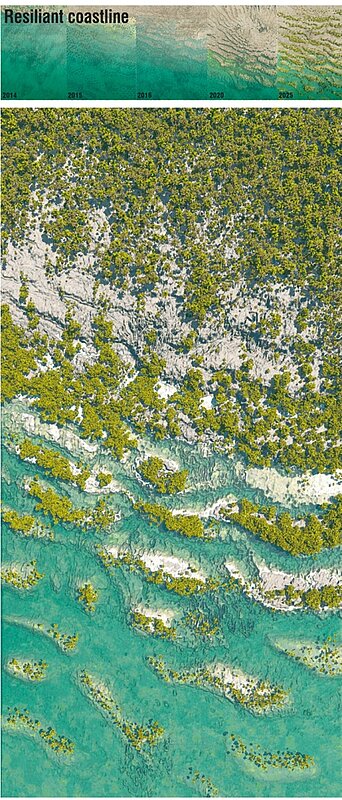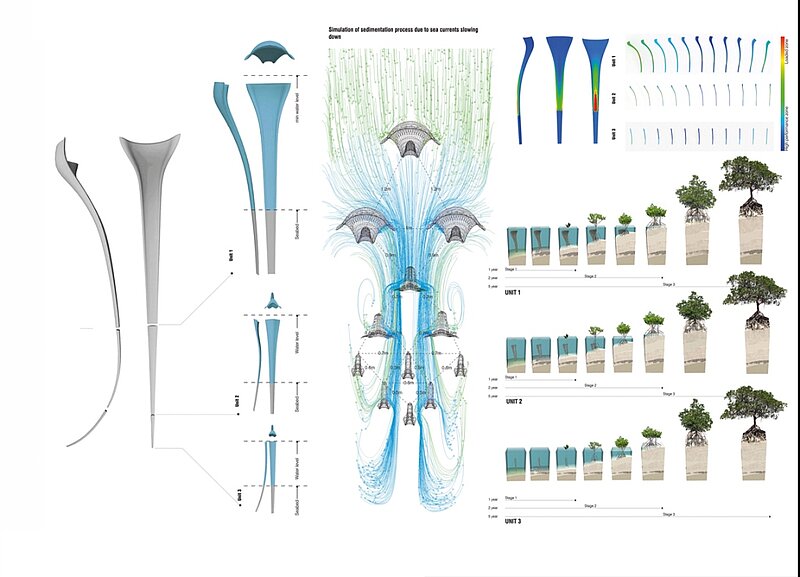Amphibious territorial 3D printing Territorial Resilience, Passive Amphibious Construction, Material Computations, Currents as productive agent
- Year2015
Historically the large majority of cities and urban habitats have established a direct contact with water. This existential cultural, social and economic link between solid ground and fluctuating aquatic context is becoming more and more complex and problematic due to outdated design strategies that are unable to respond to rising sea levels that effect lives of millions. Amphibious territorial 3D printing offers a new approach to resilient and adaptable design and production across the scale range and exemplifies a radical new vision for receptive and actuating design of constantly changing coastal regions in the future.
The project presents a novel amphibious 3D printing technique for passive and automatized fabrication of nonstandard territorial scale amphibious structures through utilisation of the power of currents and locally specific materials. The approach offers a range of original and unique advantages over conventional and established - hard and top down approaches of protecting highly important and often exposed and vulnerable coastal regions with non hierarchical agglomerations of prefabricated elements or blocking barriers.
The strategy offers a hierarchically differentiated porous and articulated structural network that interact with coastal currents and passively orchestrate sedimentation patterns to produce dynamic island formations and articulation of the shoreline. The design strategy is formulated in a way that it could be performed without constraints and negative impact to the environment. It is fully scalable and enables low impact on site fabrication of highly articulated structures from consolidated sand via biocementation and re-crystallization. These serve as a distributed matrix, and mineral structural ecology that directs sedimentation and morphology. Our first full scale pilot project and demonstration cases were built in Central America and Oceania. Based on ongoing research and teaching the project exemplifies a fundamentally new area of design research in the field of amphibious design: Amphibious Territorial 3D printing.
The Project - Amphibious territorial 3D Printing demonstrates the potential for hybrid production methods on large territorial scale with only minimal and strategically located local input of bio binder in the sand. After initial input the sand re-crystallizes and hardens into a hierarchically porous and highly articulated 3D latice. These formations in interaction with the currents then act as a local sedimentation inducer, a nuclear for new completely passive production and differentiation of the new amphibious morphology.
This processes radically extend the traditional range of direct/robotic 3d printing of finite shapes and objects towards the new adaptable and resilient composites, combining inert receptive matrix and the dynamic generative component.
The emphasis of the process is placed on utilisation of currents to three dimensionally manipulate material over time. This creates a paradigm shift from finite design printing/materialization which are often limited, by the inability to profoundly adapt to the change of environmental or contextual conditions. During the research phase Digital simulation and design of digital materials played a vital role in the design of the mathematical models that enable actualisation of the design intention in the actual physical context. This methodology promotes the production of highly articulated structures and complex geomorpology. The focus is to produce maximal output through the use of minimal external resources, energy and material. This is fundamentally important in order to explore complete cross scale range and potential of 3D printing in architectural, infrastructural and landscape real world conditions where resilience and adaptability are more and more important.
